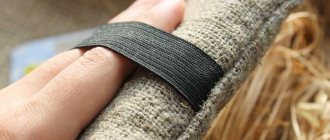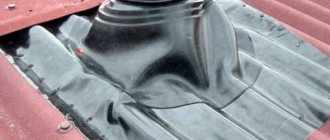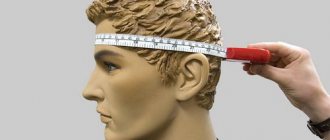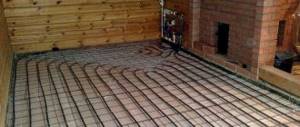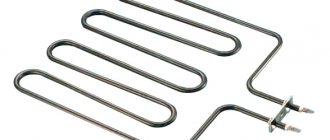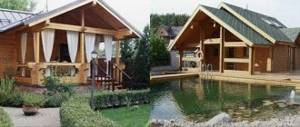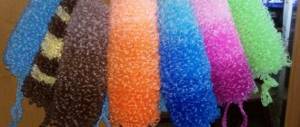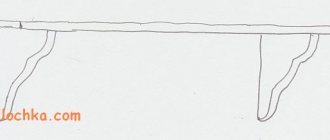Washcloth
A sponge is usually a bunch of sponge that is used for bathing. They have recently come into human use. Our ancestors simply soaped their hands or wiped themselves with a cloth. A little later they thought of covering themselves with clay and peeling it off along with the dirt. In the absence of clay, even sand was used. The first hemp washcloths began to be used only at the end of the 19th century.
as a hygiene item
The right washcloth plays an important role in proper body care. It should be thick, soft and absorbent at the same time. A properly selected sponge, while exfoliating the skin, will not scratch the body. Often, in addition to the main function of washing, washcloths help improve a person’s general condition and help overcome illness. It can be a gift for owners, newlyweds and even a baby. This care item can be bought in a store, but you can also tie a washcloth.
Advantages of a knitted washcloth:
- The hostess herself selects the desired pattern and color combination, size and shape.
- The sponge is small, so there will be little time for knitting.
- Yarn consumption is minimal; leftover threads can be used.
- Knitting patterns are simple and do not require much time.
- You can usefully spend your personal time and make the necessary thing.
You will have to look for yarn in household goods
Do you want a knitted bath product to be as effective as possible in removing dirt from the skin and have a massage effect? Then it’s better not to skimp on threads for washcloths. The most common option is polypropylene threads. Don’t be embarrassed if you haven’t seen a similar name in any store selling knitting supplies, since they don’t exist there. You will have to go to a hardware store to buy propylene threads, since these threads are essentially household twine.
The advantages of this material for knitting washcloths include a wide selection of bright colors in which polypropylene thread is presented. They are sold in reels of 300–400 grams. Other advantages of this material: its strength, and also the fact that polypropylene is not afraid of moisture, which is very important for a washcloth. In knitting, such a thread behaves well, as it does not delaminate and does not have lint. A bath accessory knitted from this material will be durable.
The disadvantages include the fact that such threads are artificial, and therefore you need to use washcloths made from them in the bathhouse carefully to avoid exposure to too high temperatures.
Fans of environmentally friendly materials can use such threads in knitting
| Name | Features and Benefits |
| Jute | It is a textile fiber that is used for twine and spinning burlap. These threads are quite stiff, which makes them a good option for a knitted bath sponge. |
| Lyko | These are fibers extracted from the deep layers of the bark of trees such as willow and linden. This is a very healthy material, since during bath procedures it releases phytoncides. They are biologically active substances, famous for inhibiting the development and growth of pathogenic bacteria and also killing them. But bast is a rather short-lived material, and therefore washcloths knitted from it using knitting needles will have to be changed quite often. |
| Hemp | Made from hemp stem fibers. These threads can also be found at a hardware store. They are durable and cleanse the skin well of impurities. |
| Linen | It is believed that it was with washcloths made from linen threads that our ancestors took a steam bath in the baths. This material is not only environmentally friendly, but also has a pleasant aroma when exposed to high temperatures. It does not cause allergic reactions, is wear-resistant and absorbs water well. |
| Sheep's wool | Similarly, he demonstrates his qualities well. But in order to knit a washcloth from it, you need to select yarn with a maximum wool content - at least 70%. Then the bath accessory will have the necessary rigidity. |
In order to knit a washcloth from polypropylene threads using knitting needles, you need to carefully look at the width of the ribbon when choosing. Choose a thin ribbon, as a wide one will make the future product very rigid, and it will simply be impossible to wash the body.
Washcloths (photo)
Today, any consumer can find a washcloth of the required shape and color. In everyday life they usually use:
- flat or tubular model with handles at the edges;
- spherical (round);
- mitten;
- heart, rectangle, voluminous sponge;
- fine mesh;
Here is a photo of several types of washcloths.
How to choose threads?
Let's take a closer look at each type of thread. Among the natural fibers suitable for knitting washcloths are:
- Hemp, made from hemp fibers.
- Jute is made from textile fiber. It makes hard products.
- Bast is rich in phytoncides, but is short-lived.
- Cotton is not very practical for washcloths.
- Wool is often used for washcloths.
- Sisal is obtained from the fibers of agave leaves and is used mainly for washcloths. It has good foaming properties and effectively cleanses the skin, providing a scrub effect.
- Flax fibers are soft, durable and dry quickly, and their qualities only increase over time. Such washcloths have numerous therapeutic and health effects on the body.
Knowing the disadvantages of natural materials, housewives still prefer synthetic fibers:
- Nylon and nylon threads, which are often used to strengthen wool. Often unwearable tights and stockings are turned into original peeling items.
- Polyethylene, ribbons of plastic bags make high-quality bath accessories.
- Viscose.
- Acrylic fibers.
- Polypropylene, the most practical and popular material for needlework.
- Rubber (rubber), today chemists have learned to produce rubber yarn, although it is rare on sale.
- Polypropylene yarn, which has increased strength. It is convenient to work with, and knitted products take good care of the body. Today, housewives have begun to combine polypropylene thread with other types of yarn, so the products come out soft and durable. Often in master classes, when knitting, pieces of foam rubber are inserted inside to give the washcloth softness.
Durability and beauty of handmade bath products
Fans of bath procedures, and everyone who cares about their health, know about the need for an individual washcloth for each family member. One product can last no more than six months, and this is the case when we are not talking about foam sponges, the lifespan of which is limited to even one month with frequent use. Regularly purchasing new washcloths can make the family budget significantly thinner. Knitting washcloths for baths, which also has the potential to become an entertaining hobby, will help solve the problem and save a lot of money.
This does not require deep knowledge and extensive experience in needlework. To knit a loofah with knitting needles, the key basics are enough. To begin with, you can practice on knitting threads, and soon your fingers will get used to simple movements. And then in just one evening you can create the easiest version of a washcloth knitted with knitting needles. With more experience, it will be possible to expand the range by adding new patterns, shapes and materials. As a result, you can not only provide your entire family with a set of individual hygiene products, but even make several options for gifts for friends.
Among the advantages of knitted washcloths, the most significant are:
- cheap materials;
- environmental friendliness;
- wear resistance;
- durability;
- good cleansing effect on the skin;
- effectiveness in removing dead skin cells;
- unique appearance.
The exclusivity of homemade washcloths knitted on knitting needles makes them a very advantageous gift option - such a second item will definitely not exist in the world. Even with a strong desire, it is impossible to connect things one hundred percent the same.
If you already know how to knit well, then you can move away from the usual shapes of washcloths and create truly exclusive options. They will not leave either adults or children indifferent. For example, homemade washcloths made in the shape of shaggy toys or berries are now on the rise in popularity.
If we talk about the cost of materials, the lion's share of the costs will go to the purchase of yarn for washcloths. However, if you don’t have any extra money at all, then you don’t even have to spend money on purchasing new threads for washcloths. There is a simple way to minimize all the costs of creating these personal care products. Some people use their old synthetic or knitted clothes for this purpose. In this case, you will only have to spend money on buying knitting needles if you don’t have them at home, although you can ask them from one of your needlewomen you know.
It is best to choose clean clothes of two different colors that are in harmony with each other, so that the washcloth looks bright and beautiful. These items will need to be cut into even strips to make ribbons for knitting. The width of the stripes depends on your desire. If you want a softer washcloth, then cut the ribbons wider, and if it’s a little stronger and stiffer, measure the distance narrower.
How to knit a washcloth with elongated loops for beginners
When creating such a model, it is enough to know the basic basics of creating “shaggy” loops. Let's look at the process step by step:
- First you need to create a chain using air loops (VP).
- After going through 3 rows with a single crochet (SC), we make a VP, then repeat the SC.
- By inserting the hook into the previous row, we create a loop.
- Picking up the thread from below with your finger, we make a large ring.
- Then, after threading the hook through the loop of the fabric, we grab the thread and pull it through. Grab the working thread again and pass it through three loops.
- We knit until we get the fabric of the desired size.
Knowing the stages of knitting elongated loops, you can start creating a bath accessory:
- We will connect a row of VPs into a circle. Its size will determine the width of the washcloth. Usually 40 loops are made.
- Having knitted 7 rows of STBN, we make elongated loops in the 8th row. They should remain on the wrong side.
- The length of the washcloth is determined by the craftswoman herself.
- We complete the work by knitting several rows of STBN, then collecting them in a circle.
- We make handles from a chain of loops. Their length is determined independently.
- The product is turned inside out and must be washed. To make the accessory soft, be sure to pour boiling water over it.
Personalized washcloths
As a gift for any holiday, you can make your own washcloth with a name or any memorable inscription for your mother, grandmother or any dear person. Next, we will consider the process of crocheting a round or rectangular washcloth with elongated loops with a double-sided inscription.
To work, you need to prepare yarn of two shades. For the main fabric, you can take a whole skein, but for the inscription you need very little thread; it can be made from leftover yarn.
The strap and handle for such a washcloth can be knitted from yarn to match the inscription.
This video shows how to knit letters on the main fabric. You can choose any shape of the washcloth, rectangular, square, or oval.
Round washcloth with elongated loops
The question often comes up on the Internet: “Is it possible to learn how to knit a washcloth just from a video?” Of course, even beginners can do such a task. All steps of creating an accessory are reproduced step by step on the screen. For convenience, we additionally place a pattern for knitting a washcloth.
Each craftswoman determines the required number of rows individually. The edges of the product can be sealed by knitting 2-3 rows of STBN and 2 loops together (alternating).
Crochet washcloth mitten
The bath mitten is knitted similarly to a regular mitten. The only difficulty arises when creating the thumb, but it can be omitted. For work, take threads of sisal or flax, but nylon will cause excessive rigidity. To make the product attractive, use bright yarn.
- For a large palm we create a chain of 30 VPs or 20-25 for a small one.
- We continue to work with single crochets in a circle.
- Moving to a new row, knit 1 VP.
- Having reached the desired size, connect the top of the mitten with STBN.
- Fasten the thread.
For babies, washcloths are made from flax threads by analogy. Knitting patterns greatly simplify the work.
Knitting a kitchen sponge
The previous pattern with elongated loops can be easily adapted to crocheting a flat washcloth for washing dishes or cleaning grease from pans. In addition, this model knits much easier and faster than a bath sponge, and is just as useful around the house. So, stock up on patience, threads, crochet and get to work.
Necessary materials:
- 100% cotton yarn;
- hook size H.
Process description:
- Crochet a chain of 13 chain stitches or more. The number of stitches directly depends on the width of your palm. If your hand is wide, you will need a little more loops.
- Then knit 13-15 rows up with regular single crochets. Their number depends on the length of your fingers. Simply measure the length by holding a piece of the finished piece to your hand. If the yarn completely covers your fingers, then move on to the next step.
- On the next line, make a single stitch at the beginning of the cycle, and then cast on a chain of 5 chain stitches.
- Secure the chain in the same stitch from where you started casting on the loops.
- To create a pattern, alternate elongated loops with regular single crochets, maintaining a 2 to 2 ratio.
- Continue knitting in the same way until the end of the row, and then fasten on a new working thread in a contrasting color.
- The principle of knitting the next row is similar to the previous description, except that with elongated chains you need to work in the place where regular single crochets were previously knitted.
- Try to knit chains from the front side of the work so that you get a convex pattern directly on top of the previous line.
- When you have completed all the rows, you need to additionally knit an edge of two single crochet cycles.
- The total number of rows with elongated loops and edges should be equal to the previous rows, where the work was carried out with regular loops.
- Now fold the yarn in half and tie the edges with connecting stitches or simply sew the back and front together with thread.
- An excellent pocket washcloth for washing dishes is ready.
Multi-colored propylene washcloths
It is no secret that knitting, in addition to perseverance and desire, requires certain skills from the craftswoman. We look for them in books or find them on the pages of magazines. Today, it is enough to open the Internet, ask a question in a search engine, and the required answer will appear on the monitor screen. Even if a crochet hook has just appeared in your life, with the help of the “DIY” resource you will quickly master the technique of knitting a multi-colored washcloth.
Crochet dishwasher
Every housewife knows how often she has to change her kitchen sponge. Why not knit it yourself? Only 20 g of synthetic yarn will be needed to create such an item. When knitting, you can combine the colors of the threads.
Option 1:
- Using hook number 5 we create 50 VP.
- We knit 4 rows (knit and purl) STBN. The tape comes out wide.
- Then we fold the canvas so that the smaller edge overlaps the larger one.
- Place the long end under the ring and weave the entire ribbon in a circle.
- We sew the edges.
2nd option:
- Having collected 20 VPs from a synthetic thread, we connect them into a circle.
- Let's make 10 rows of STBN. We will hide a piece of foam rubber inside.
- Let's add 10 more rows and finish the job.
Do-it-yourself washcloth - a ball.
We offer you another master class on making a washcloth - a crocheted ball with your own hands. Master class by Elena Shatokhina.
The size of the finished product is 11 cm in diameter. You will need cotton yarn and a size 4 hook.
First, we knit a chain of 5 chain stitches and close it into a ring using a connecting post,
then, for hanging, we will collect a chain of 40 air loops and close it with the help of a connecting post into the first loop.
Now we knit in a small ring in this way, with each circular row starting with 1 chain lifting loop instead of one single crochet or stirrup with lifting chain loops instead of the first double crochet and ending with one connecting stitch in the top lifting chain stitch:
- First circular row: knit 18 single crochets into a ring;
- Second circular row: knit 3 single crochets into each loop = 54 loops;
- Third circular row: knit 3 single crochets into each loop = 162 loops;
- Fourth round: Using fuchsia thread, work 1 single crochet into each stitch.
Tip: If you want to knit a product with a larger diameter, if instead of single crochets you will knit double crochets or use a larger hook or make an increase in loops.
Loofah ball crochet video
Toy - crocheted washcloth video
How to crochet a strawberry?
If you want to add a bright strawberry note to your bathroom, then start knitting a “delicious” strawberry washcloth. Red and green polypropylene thread is suitable for it. If the item is intended for children's skin, take a softer yarn. For a strawberry (12 x 18 cm), a tiny piece of foam rubber is needed for filling.
- Having dialed 3 VPs, we close them in a ring, and from the center we take 6 STBN.
- Gradually add 6 loops per row.
- Let's create elongated loops in a circle. Having collected 10 rows, put the foam rubber and begin cutting the loops (two together) until the ring closes.
- Using the diagram, we will make 6 green leaves and a red flower. Carefully sew the parts to the top of the product.
- From 20 VP we will make a loop.
Crocheted bath sponges Making your own bath sponges is a quick and easy way to get an exclusive handmade accessory. When creating it, you can choose the size, material, design and color of the product to your liking. This could be something for yourself, a souvenir for an adult, or a gift for a child. How to crochet a washcloth: preparatory activities The work begins with choosing the appropriate type and size of washcloth, as well as the optimal material. At the same time, you need to take into account certain nuances so that the product performs its functions well, pleases with an attractive appearance and lasts long enough. Choice of material In general, you can knit a bath accessory from any thread. The main thing is that the material meets the following requirements: 1. Strength and durability. A high-quality product must withstand long-term use in conditions of elevated temperatures and humidity. 2. Wear resistance. The fibers of the thread should not become frayed after repeated use. 3. Environmental friendliness. The yarn must be non-toxic and free of foreign odors. 4. Hypoallergenic. This is an important requirement, since the threads come into direct contact with bare, steamed skin. 5. Ability to retain water, good foaming. Knitted washcloths for baths and saunas can be made of either natural or synthetic fiber. Artificial threads are more durable and come in a variety of colors. They create abundant foam and allow you to quickly lather up. Natural raw materials have a pleasant aroma and a healing effect on the body. Popular types of materials Let's consider the most successful types of yarn, which are guaranteed to produce beautiful and durable things. Polypropylene thread This is the most affordable and popular option. Polypropylene yarn is produced by many textile factories. It is sold in small packaging in small skeins of 50-100 g or in reels. The advantages of such raw materials: • high strength and durability in conditions of active use - the threads do not stretch, do not deform, do not unwind, do not tear; • resistance to temperature changes of water and air – relevant for a steam room; • the material does not absorb water and does not change its characteristics during operation; • resistance to detergents; • immunity to the effects of microorganisms, fungus formation; • environmental Safety; • rich color palette; • availability – polypropylene yarn can be purchased at any household goods or craft store. Synthetic thread varies in thickness. A variety of washcloths are knitted from it: hard ones for therapeutic or warming massage, or softer ones for daily bathing in the shower. And the variety of colors allows you to create interesting toys or select the color of an accessory to match the overall design of the bathroom. Lyko This is a completely natural, natural raw material. The threads are woven from fibers obtained from the trunk of the linden tree. The material has the following advantages: • environmentally friendly and natural; • pleasant woody aroma of fibers; • bast washcloth perfectly cleanses the skin and effectively removes keratinized particles of the epidermis; • positive effects on the skin and the body as a whole. Bast has a wonderful aroma, it creates a special atmosphere during bath procedures. Among its disadvantages are its fragility, as well as the difficulty of obtaining abundant foam. Jute Jute threads are natural textile raw materials. They are obtained from a plant of the linden family. Jute fibers are very strong, but quite tough. They are used to weave ropes and also weave durable burlap. Jute makes durable and very strong knitted bath sponges. They have a powerful massage effect and effectively remove dirt and dead skin particles. Jute stimulates active blood circulation in the layers of the epidermis. It improves skin tone, improves its elasticity and color, and has a rejuvenating effect. Hemp Another natural raw material is obtained from hemp fibers processed in a special way. During the hemp production process, the plant is soaked in water for a long time. After this treatment, the fibers become very strong and resistant to moisture. Among the advantages of hemp products one can note: • naturalness and environmental friendliness; • high strength, long service life; • resistance to water, steam, high temperature; • providing a peeling effect, good cleaning properties; • hypoallergenic and safe for humans. Natural bath accessories made from hemp can be used by children and people with sensitive skin. Linen Linen washcloths are a traditional option for a bath. All-natural, eco-friendly products are hypoallergenic and have a pleasant aroma. They lather well, effectively cleanse the skin, and are suitable for massage. Flax fibers are very strong and wear-resistant. An accessory made from them will last a long time and will not lose its original shape. Luffa This is an exotic herbaceous plant of the pumpkin family; its fruits resemble cucumbers in appearance. Luffa is often used as a raw material for bath accessories. These products are soft and have a pleasant aroma. They have a healing effect and excellent cleaning properties. But you need to take into account that natural wet fibers are a good environment for bacteria to live. Therefore, it is important to change your bath sponge regularly. What else needs to be taken into account Before starting work, you need to choose the thickness of the thread suitable for weaving, select tools and accessories. For work you will need: 1. Crochet hook with a rounded head. 2. Scissors for needlework. 3. Foam rubber - used as a filler to increase foaming and save on shower gel consumption. The thickness of the thread directly affects the stiffness of the finished product. The finer the fibers, the softer the accessory will be. If it is intended for a child or you need to get a soft cleansing effect, a thin thread and a No. 2 hook will do. To knit a denser product with a massage effect, you need to take hook No. 3 or No. 4. Accordingly, the thickness of the yarn is selected for it. You also need to remember that unprocessed natural fibers themselves are quite hard and can injure steamed skin. Therefore, a finished accessory made of jute, flax or bast must be soaked in boiling water for 15-20 minutes before first use. Patterns of crocheted bath sponges The choice of the type of knitting sponge for a sauna depends on its geometry and size. Usually, two main methods of casting on loops are used: • simple single crochets - for the edge of the product and handles; • columns with elongated loops - for the larger, fluffy part. The finished “terry” cloth with elongated loops whips up foam well and looks beautiful. Moreover, it does not require any special skills. Knitting elongated loops - instructions for beginners step by step A fluffy fur pattern from yarn can be obtained by knitting or crocheting. The second option is used more often. This weaving is quite simple, even beginners can handle it. To crochet a fluffy pattern, you need to follow these steps: 1. Cast on the initial chain of chain stitches. 2. Knit a little with a regular single crochet (3-5 rows). 3. Start the next row with an air loop for lifting. 4. Then knit one single crochet. 5. Insert the crochet hook into the base of the loop. Knit an additional chain stitch and leave it on the hook. 6. Grab the working thread from below onto your thumb, thus making a neat ring. 7. Place the hook at the base of the next column in the row. Raise another air loop. 8. Pick up the working thread, then pull it through all the loops on the hook. The result is a lush column. The extended loop is firmly fixed in one place. 9. Repeat steps 5-8 until the end of knitting.
As a result, on the front side the finished canvas has an original “terry” appearance. On the inside, all elongated loops are secured, so the fabric is durable and does not stretch or deform during use. Creating elongated loops is a simple process, but quite lengthy and labor-intensive. Here it is important to monitor the length of the elongated loops (the size of the rings), and also be sure to fix them firmly. Beginning needlewomen should watch a master class on crocheting washcloths for a bath on video or with detailed step-by-step photos. To ensure that the elongated loops are of a certain size, you can use auxiliary tools: a pencil, a small ruler, a piece of thick cardboard. The knitting method depends on the desired shape. The accessory can be flat (rectangular, round or oval), in the form of a volumetric closed pipe - foam rubber can be sewn into it, in the shape of a mitten or a toy. Simple flat. A rectangular product is the easiest to knit. Here elongated loops are made every 3 rows. The rest of the knitting is regular single crochet.
In an oval shape, increments are made along the edges - in this case, you need to be careful so as not to make mistakes or get confused. Elongated loops are made after 2 or 3 rows.
In a round product, the loops are pulled out every 2nd or 3rd row. This shape looks especially impressive when using multi-colored yarn. A strap handle is usually made on the back side; with its help, the washcloth is put on as a kind of sleeve.
Pipe (volumetric) The pipe shape gives the accessory additional volume. It’s also convenient that there is no reverse side. You can sew additional material inside to increase softness or put soap for quick foaming. The washcloth tube consists of several parts: • central, fluffy – fabric with elongated loops; • smooth cuffs on both sides – knitted in simple single crochets; • two loop handles. To get such a thing, you need to close the chain of loops into a ring. Then the knitting is done in a circle, as in the usual flat version of a rectangular shape. Mitten A bath mitten is knitted using the pattern of a regular mitten. It can be made with elongated loops or a regular single crochet. The second option is more often used when knitting with yarn made from natural fibers (linen, luffa, hemp, abaca). Additionally, the mitten can be decorated with an applique or an original toy, then it will be an excellent gift for a child. A knitted mitten is indispensable when performing massage procedures in a bathhouse. But it can also be used in a regular shower. Toy Original, beautiful souvenir toys are knitted as a gift for children. It could be a hedgehog with soft needles from elongated loops, a fluffy kitten or a funny frog. There is no limit to the imagination of the needlewoman. But such creativity requires sufficient knitting experience. How to calculate yarn consumption The number of threads for knitting depends on the shape and size of the product, the selected type of yarn, and the thickness of the threads. The length of pulling the loops also affects. The optimal size of the accessory is determined individually depending on the height and dimensions of the person for whom it is intended. Thus, the length of a knitted washcloth for a bath with two handles (flat rectangular or in the form of a tube) can be 20-30 cm. It should be convenient for a person to wash their back with it. The mitten is also knitted to suit the size of the hand. On average, a regular rectangular washcloth with elongated loops takes about 800 m. But beginners need to buy yarn with a reserve, since their hand has not yet been filled and the knitting density has not been adjusted. A unique product, knitted with your own hands, will be an excellent gift for an avid bath or sauna lover. In addition, crocheting bath washcloths will brighten up the craftswoman’s leisure time and save money.
Knitting patterns
Using patterns for knitting washcloths in your work, you can create different models of bath accessories.
Scheme 1: Oval model
Diagram 2: Round model
Scheme 3: Elongated loops can be made not only with your finger, but also with a school ruler.
